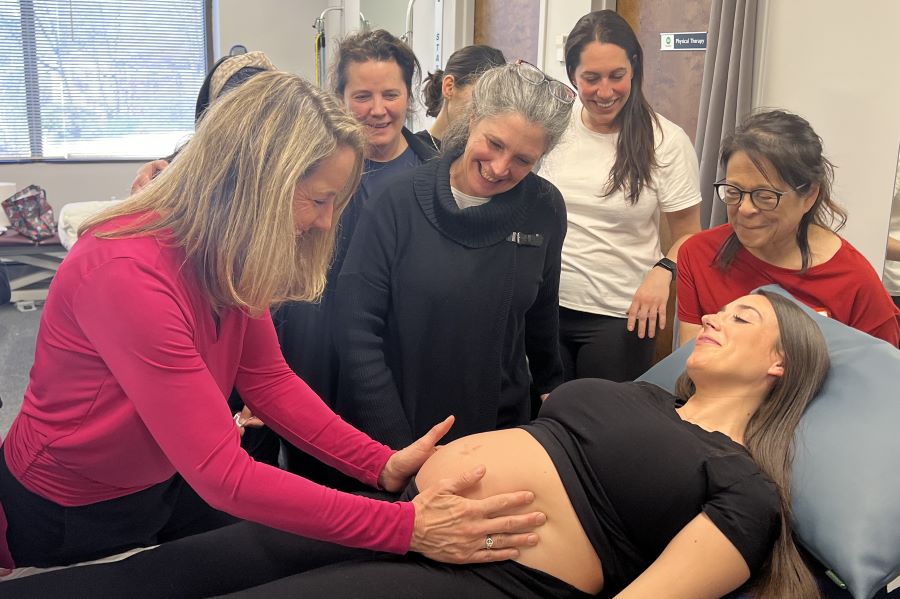Working With The Round Ligament in Pregnancy
I am having so much fun working with the round ligament in my pregnant clients! All the uterine ligaments need to be assessed in pregnancy, but when you work and release the round ligament, it is so fun to see the changes in the appearance of the pregnant belly.
Let’s Discuss the Fun Facts of the Round Ligament
The round ligament attaches to the anterolateral horn of the uterus – there are some variations to this, but in general, this is the area of attachment. Then we know it attaches into the labia majora; however, with newer research, we now know that it actually comes into the inguinal ring. It travels through the canal and sits right above that inguinal ligament. The fun fact about the round ligament is that the makeup of the ligament actually changes as it pierces through the transverse and oblique muscles and takes on the quality of those muscle fibers. Yes, the round ligament is actually about 80% muscular and really shouldn’t be called a ligament because of it’s make up. It’s main function is to support anteversion of the uterus.
Palpating the Round Ligament in Pregnancy
Palpating the round ligament during pregnancy is a rewarding experience. It’s easily accessible, located superficially, and undergoes significant changes in both length and width. On average, during pregnancy it becomes 3-4 times thicker and 4-5 times longer, expanding from 10-12 centimeters to 40 cm. This increase in size makes it easier to palpate and observe its effects when restricted in the pregnant body. You can feel the rope-like structure, and when it’s dysfunctional it feels bigger than the other side.
Being able to palpate the uterus position and mobility in the abdomen gives you clues as to if the round ligament is dysfunctional or not. Moving the uterus superiorly on one side by rotating it in the frontal plane will be restricted on one side if there is dysfunction. Also, if the fundus of the uterus is pulled off to one side and not stacked on top of the baby’s head as it enters into the pelvis is another sign of a restricted round ligament. Seeing a pregnant belly that is more wide side to side may also be an indication of bilateral round ligament tightness.
Releasing and Balancing the Round Ligaments
Our goal when releasing the round ligament is to restore as much balance in our client’s body as possible. This can create space for baby to get into the best position possible.
Since learning of the round ligament’s travels through the inguinal canal, I’ve added a couple of steps to release it. I first learned to release the attachment points on the uterus and the labia. Now, I add the intersection of the inguinal canal to my release work, and it’s amazing to see the changes in the pregnant belly after doing so. However, the biggest change to the shape of the pregnant belly comes after doing an inversion and letting the uterus dangle and then come back upright. The round ligaments can continually get out of balance during pregnancy. Making inversions part of your clients home exercise program is important for overall uterine balance in pregnancy.
Giving The Baby More Space
To give you a visual, here are some pictures of pregnant clients I’ve treated. You can see the difference working with the uterine ligaments and doing inversions can make:
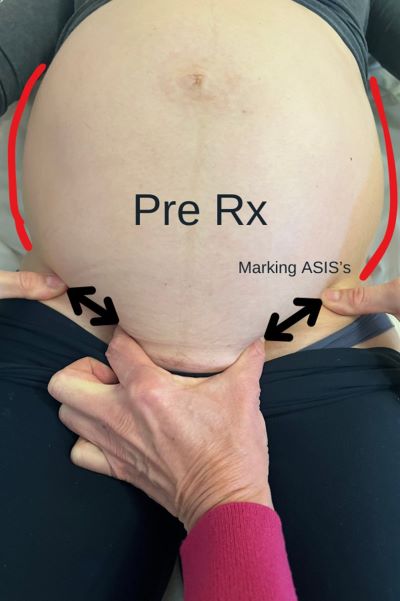
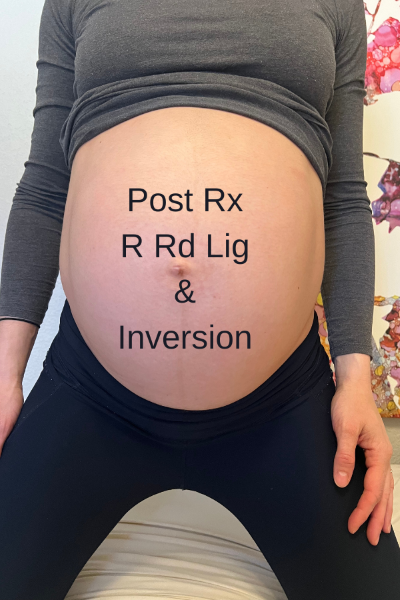


Notice how the fundus is more situated on top of the baby’s head after releasing the right round ligament.
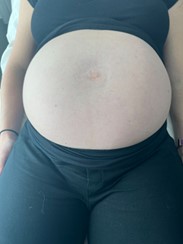
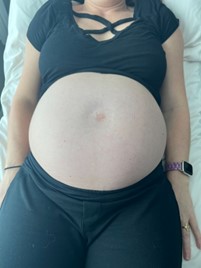

In this case, baby has found greater space superiorly and inferiorly and is less side to side.
It’s important to understand the impact of restrictions in the uterine ligaments, and the impact working on the round ligament can have on the baby’s positioning in the belly. Being able to effectively change the restriction in these ligaments to give more space to the baby and find balance within your client’s body should result in a smoother birth.
Treating the Pregnant Body
If you are interested in learning more about working with the uterine ligaments and how to assess and treat the pregnant body effectively, join the online cohort for the Holistic Treatment of the Pregnant Body. Registration for 2024 is open through May 5, 2024.
About the Author: Lynn Schulte is a Pelvic Health Therapist and the founder of the Institute for Birth Healing, a pelvic health continuing education organization that specializes in prenatal and postpartum care. For more information, go to https://instituteforbirthhealing.com

